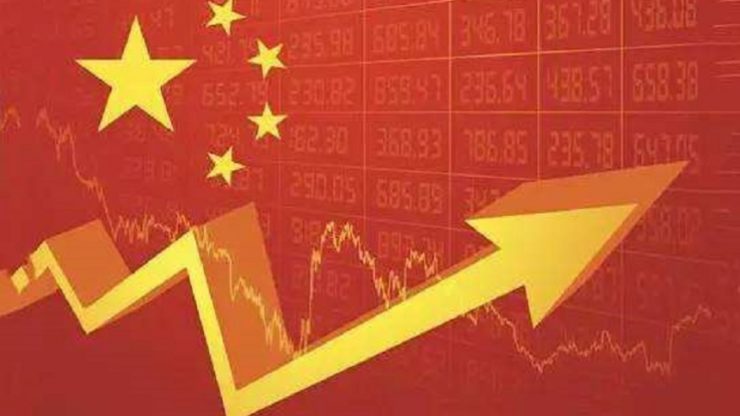
When it comes to estimating the health of China’s economy, including its exports, most Western political and economic pundits tend to look at Chinese trade and economic relations with the West (the US and the EU) mainly. In making these assessments, these pundits quite often ignore China’s trade ties with the ‘Global South’ (ASEAN, South Asia, Middle East, Africa, Central Asia, Latin America, etc.) and the impact this trade has on the growth of China’s political and economic influence worldwide.
Such wrong estimates are often at the heart of analysis that often see China’s economic fortunes going from “bad to worse” and facing a serious “downturn”. To some extent, a key reason why these analyses ignore trade with the ‘Global South’ is that China, until recently, was not a major economic player in this specific economic region of developing and under-developed countries. But this is no longer the case.
Trade Growth with the Global South
As the latest figures show, China’s trade with the ‘Global South’ is more than its trade with the ‘Global North’. Today, its monthly export to the ‘Global South’ is US$150 billion, up from US$90 billion in 2020. The surge coincides with the tariffs Washington began to impose on Chinese exports to the US after 2016. The cardinal purpose of these tariffs – and subsequent restrictions imposed by both the Trump and the Biden administration on the export of technology to China – was to forcibly restrict the growth of the Chinese economy in order to maintain the US hegemony worldwide. But China found a way around, as it began to export more to countries in the ‘Global South’, some of which, such as Vietnam, now export made-in-China products to the US.
Ironically, Chinese products being re-routed to the US via Vietnam have allowed the latter to establish a US$105 billion surplus with Washington. This is 2.5 times bigger than the surplus Vietnam had with the US in 2018. This surplus is the outcome of the US importing from Vietnam twice as much as in 2018. So much for the success of making America great again!
Western Media’s Cognitive Dissonance and China’s Deep Economic Involvement
But the importance of this shift is practically lost on the Western media, as it continues to satisfy its cognitive dissonance by highlighting China’s inability to win “the war for hearts and minds” in the ‘Global South’. Does winning this ‘war’ even matter? If China is not winning this particular war, the implication is that someone else, i.e., the West, is winning this ‘war’. But why is the West still losing the economic war, and why is China still winning? How is this even possible without a ‘change of heart’ in the ‘Global South’ vis-à-vis both China and the West? Still, even if the West is winning the ‘war for hearts and minds’, it is not selling much. On the other hand, China is not only selling more to the ‘Global South’ but also making sure that its products are cheap enough for them to buy. Among the list of products most in demand are (cheap) Chinese electric vehicles.
Not only is China making cheaper vehicles – which is due to both state support and the fact that Chinese companies are able to produce most parts locally – but a key reason why China is dominating these markets is its much deeper involvement in the economies of this economic region. Let’s talk about natural resources that are needed to produce batteries for electric vehicles. A recent BBC report found that China is operating at least 62 mining sites across the world to extract such natural materials as lithium that are used to build lithium-ion batteries for electric vehicles. This is Chinese investment in these countries – which are mainly in the Global South – where the West does not have a comparable presence and, as a result, finds itself unable to compete globally with China.
Alternative Trade Geography and Economic Resilience and Growth
To a large extent, this presence has now turned into an alternative geography of trade dominated by China. Traditionally, countries from the ‘Global South’ exported raw materials to the West to earn foreign exchange. But China has reversed this trend. So, instead of making these countries send their material to China, the latter, via its Belt & Road Initiative (BRI), has been able to establish a firm presence inside these countries through bilateral agreements. In other words, even if the US were to continue to impose tariffs on China and even if the EU were to follow, the magnitude of China’s alternative e.g., West-free, geography of trade is quite likely to continue to grow large enough for Beijing to deal with any shocks from the West easily. In fact, despite tensions with the US and the EU, China’s economy is all set to grow at 5 per cent, up from previous estimates of 4.6 per cent, even according to the estimates of the International Monetary Fund (IMF).
Therefore, China is most certainly not ‘falling’ and not facing any overcapacity problems and challenges. On the contrary, as it stands, China is proactively using its presence in the Global South to compete – and defeat and replace – the West-centred global political and economic order.
This overall trade and shift away from the Western-dominated system is being reinforced by de-dollarization via currency swap agreements. China has already signed at least 40 currency swap agreements worldwide, which means the net of Chinese trade that cannot be subjected to Western sanctions is expanding gradually but surely and is all set to become wide enough to engulf most, if not the entire, world pretty soon. Meanwhile, policymakers in the West will continue to come up with analyses that help them shut their eyes to the reality of Chinese dominance.
Salman Rafi Sheikh, research analyst of International Relations and Pakistan’s foreign and domestic affairs, exclusively for the online magazine “New Eastern Outlook”.